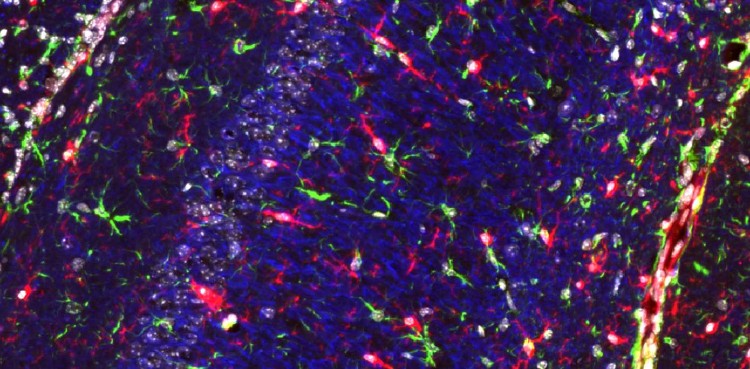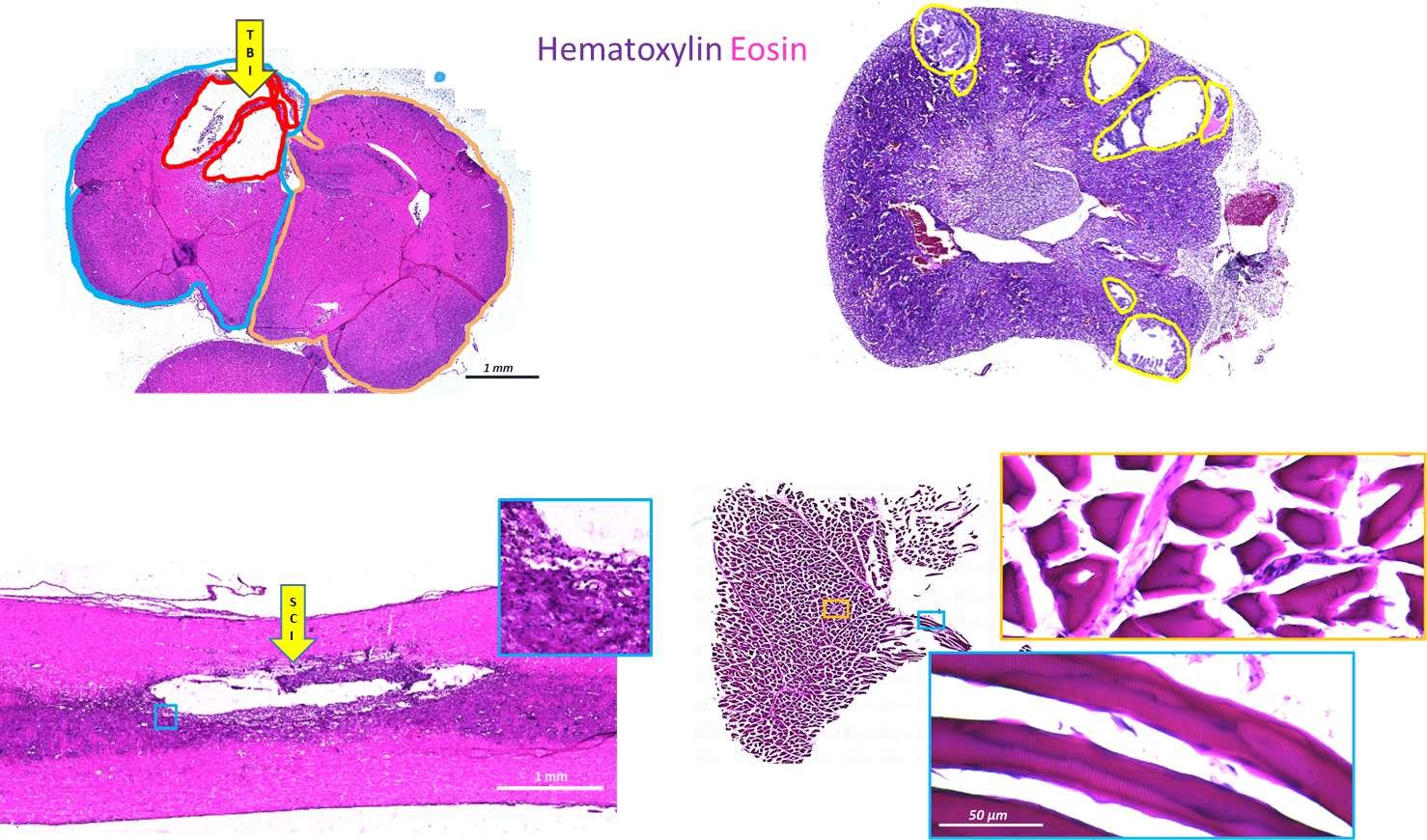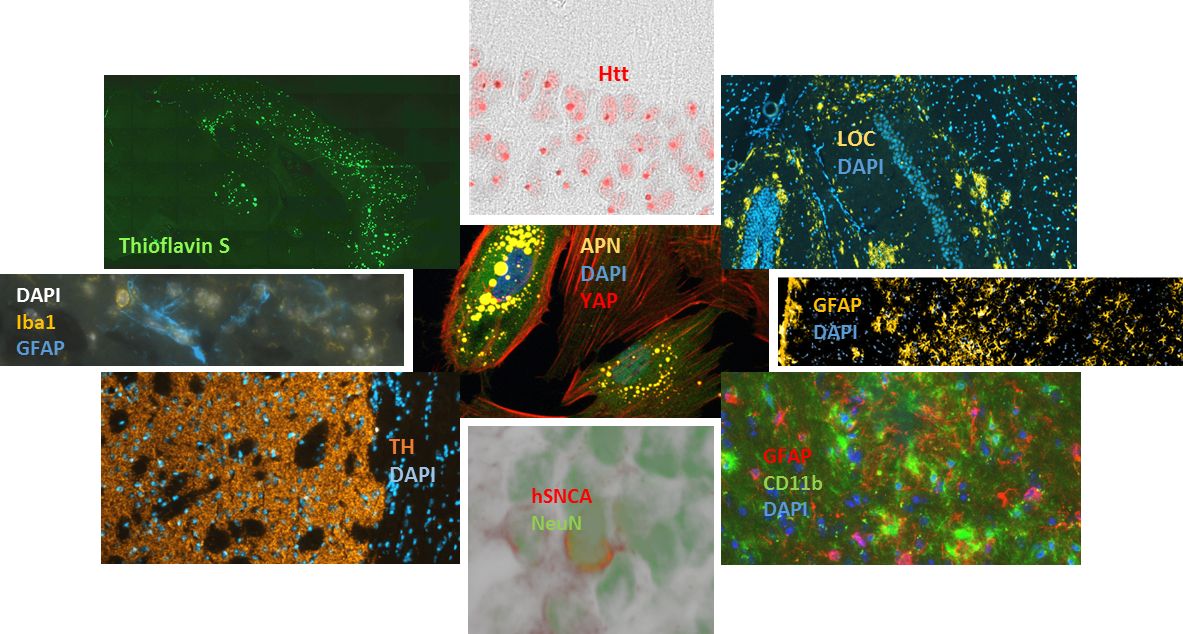Immunohistochemistry
PsychoGenics’ capabilities include standard histochemical staining as well as sophisticated multiple immunohistochemical labeling. We offer a wide range of tissue staining, like Nissl, H&E, Campbell Switzer Silver Staining, Bielschowsky Silver Staining, Thioflavin S, Congo red, DAPI, and many others.
Figure 1: Exemplar applications for histochemical H&E staining. (Top Left) Determination of lesion and spared tissue volume after Traumatic Brain Injury (TBI); (Bottom Left) Determination of lesion and spared tissue volume after Spinal Cord Injury (SCI); (Upper Right) Determination of kidney tumor volume in TSc2 mice; (Lower Right) Determination of immune cell infiltration in muscular dystrophy mice (MDX).
Figure 2: Exemplar images for fluorescent histochemical staining. (Left Panel) FluoroMyelin ™ staining against myelin sheaths showing defects after Experimental Autoimmune Encephalomyelitis (EAE); Middle: Thioflavin S staining against neurofibrillary tangles (NFTs) in Tauopathy mice (rTg4510); (Right Panel) Congo Red staining against neurofibrillary tangles (NFTs) in Tauopathy mice (rTg4510).
PsychoGenics utilizes countless antibodies alone or in combination to enable comprehensive analysis of disease tissue and treatment. A list of antibodies that are validated and on stick is shown here. Image sets for validated markers in various disease models can be found at their description.
Figure 3: Exemplar images of immunohistochemical labeling. Htt = Huntingtin; GFAP = glial fibrillary acid protein, Iba1 = ionized calcium-binding adapter molecule 1; hSNCA = human alpha synuclein; CD11b = cluster of differentiation 11b; APN =adiponectin; YAP = Yes-associated protein; TH = tyrosine hydroxylase; NeuN = neuronal nuclei; DAPI = 4′,6-diamidino-2-phenylindole.






